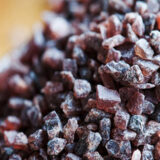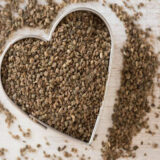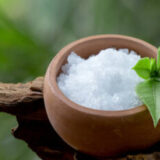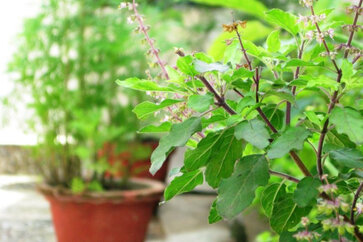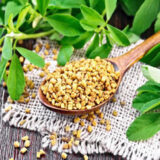Ayurvedic Medicine For Sugar – How To Control Diabetes Using Herbs
 Diabetes is also referred to as “diabetes mellitus” by the doctor, in medical terms, it is a condition in which our body is unable or produces insulin, or it generates a small amount within the body. Due to a lack of insulin glucose uptake by the body cells becomes deficient and blood sugar levels increase.
Diabetes is also referred to as “diabetes mellitus” by the doctor, in medical terms, it is a condition in which our body is unable or produces insulin, or it generates a small amount within the body. Due to a lack of insulin glucose uptake by the body cells becomes deficient and blood sugar levels increase.
The most common there are two types of Diabetes the first one is “Type 1 diabetic” in which patients produce little or no insulin hence insulin injections are needed to control their blood sugar. The second type is “Type 2 diabetics” in this; the patients can control their blood sugar with a combination of diet, exercise, and weight management along with glucose-lowering medicines.
Ayurvedic View – Treatment For Diabetes
According to Ayurveda principles, our bodies are made up of three doshas, “Vata, Pitta, and Kapha” the energies that make up every individual different. The unevenness is the origin of all diseases within the body, in simple words if doshas are not in equilibrium it causes illness.
According to Ayurveda principles, Diabetes is not regarded as a disease that can be treated by medicine or by a dietary regimen. Ayurveda refers to diabetes as a metabolic Kapha type of disorder in that moderate function of Agni causes a tendency in the direction of high blood sugar.
In Ayurveda Diabetes is a term “Madhumeha” and is classified as “Maha Rog” (Major Disease). It is termed as Maha Rog because if it is not treated in time it can lead to several complications within the body. These complications can lead to various ailments such as joint pains, including eye problems, kidney failure, impotency, sexual and urologic problems, etc.
Diabetes is a metabolic disorder that cannot be simply treated by controlling sugar levels. There are different treatments recommended in Ayurveda, which are aimed at rejuvenating the body and not only balancing sugar levels. As per the Ayurveda text, there are about twenty different types of diabetes (premahas) that exist in Ayurveda, which is responsible to give rise to Madhumeha.
Ayurvedic Medicine For Sugar
Ayurvedic herbs used as medicines are useful both in reducing blood sugar as well as for dealing with long-term complications. Most of this medicine is used independently as well as with additional therapy such as massage, yoga which is also referred to in modern medications. Ayurvedic treatment for diabetes can significantly lower the morbidness (severity of disease) and mortality (death rate) linked with diabetes mellitus.
1. Bael (Aegle Marmelos)
Bael leaves are customarily used in performing religious rituals for offering to Mahadev or God Shankar. Bael leaves are also known as Bel Patri, Bilva, or wood apple leaves in English. Bael or so-called Aegle Marmelos is beneficial in controlling diabetes due to its powerful antioxidant properties.
The important antioxidants fight against the free radicals in the body and are helpful in diabetic treatment. The damage-free radical (Oxidative stress) is one of the known reasons that cause the beginning of diabetes.
How to use Bael Leaves: Take 4 or 5 leaves of Bael leaves, and extract juice from the leaves in one cup of water. Put a pinch of black pepper in it and consume.
2. Bitter Gourd (Momordica Charantia)
Bitter Gourd is also known as “karela” in Hindi; it is one of the most well-known foods for diabetics. It is an important herb mentioned in the Ayurveda text that has varieties of health benefits.
Bitter Gourds have a property called “Charantin” which is one of the substances that help in lowering blood glucose naturally. It also has “lectin” which is familiar to reduce blood-glucose concentrations and suppress hunger.
How to use bitter gourd: Take 1 cup of roughly chopped, deseeded bitter gourd (karela) now mix the bitter gourd with 1/2 cup of water in a mixer and blend till smooth. Strain the mixture using another 1/2 cup of water. Add 1/2 tsp lemon juice and salt mix well, the juice, and serve immediately.
3. Garlic (Allium Satirum)
When a person is unable to produce enough insulin or use the insulin their body does produce in an efficient manner those results in ailments known as diabetes. Garlic is known to have more than 400 chemical elements that are helpful to the body and can prevent and treat a diverse range of health problems.
Besides this, it also has a compound known as “allyl propyl disulfide,” “allicin” and “S-allyl cysteine sulfoxide” that boosts insulin levels within the blood through the prevention of the liver’s inactivation of insulin, so that further insulin is available in the body. According to Ayurveda practices, diabetes is a Vata disorder, and garlic is used to treat various Vata issues.
How to use Garlic: Take garlic clove peel it and chop it into tiny pieces, crush them and leave it for 10 to 15 minutes and then add it to your food. Leaving chopped garlic for 10 to 15 minutes will release a compound called “allicin” that contains medicinal benefits.
4. Fenugreek (Trigonella Foenum Graecum)
Fenugreek seed is also called Methi in Hindi it is an herb that offers many medicinal benefits besides diabetes. Fenugreek seeds have a chemical element that can help to lower blood glucose and other related symptoms such as tiredness confusion, headaches, dizziness, etc., which are generally related to diabetes.
Besides this Fenugreek leaf is also a wonder herb, it has minerals, vitamins, calcium, iron, proteins, and a rich source of dietary soluble fiber. Due to these properties, Methi leaves can be helpful and can boost health condition’s blood pressure, such body fluids, heart rate, and even diabetes mellitus.
How to use Fenugreek: How to use Fenugreek: Take 2 tablespoons of fenugreek seeds in 1 glass of water cover the glass and place it aside for a night. In the morning strain and drink, have it first thing on the morning. Repeat this process every day for about a month to bring down your blood glucose level.
5. Jamun/ Indian Plum (Syzygium Cumini)
Black plum also known as “Jamun” in Hindi it is one of the important herbs mentioned in Ayurveda for curing diabetics. Jamun has a property that works on the pancreas and controls the transformation of carbohydrates to sugar. The Jamun fruit as well as seeds carry no sucrose that is helpful in bringing down sugar levels in blood and urine.
The seeds of Jamun also help in converting starch into sugar, which is useful in controlling blood sugar levels. Regular consumption of Jamun will also help people with type diabetes-1 as it can help in postponing or even complete prevention from the onset of diabetes.
How to use Jamun/ Indian Plum: Firstly, if you are a diabetic patient eat the flesh of Jamun fruit; secondly wash the seeds thoroughly with water 3-4 times. Let it dry under the sun for few days until all the moisture is removed. Make it into a powder. Take 1 tsp of powder in a glass of water and drink on an empty stomach in the early morning.
Note: You can also dry Jamun seeds in a pan until they turn crispy and use.






